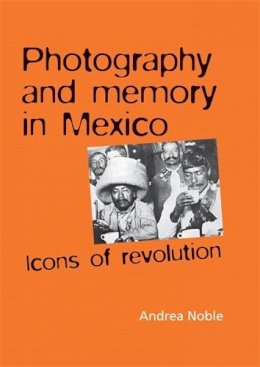
Stock image for illustration purposes only - book cover, edition or condition may vary.
Photography and memory in Mexico: Icons of Revolution
Andrea Noble
€ 150.87
FREE Delivery in Ireland
Description for Photography and memory in Mexico: Icons of Revolution
Hardback. This study explores a range of photographic images made during the 1910 revolution. Repeatedly reproduced across a range of media in the aftermath of the conflict, the analysis of this select handful of photographs brings to light compelling stories about cultural memory and identity in the twentieth century and into the twenty-first century. Num Pages: 200 pages, Illustrations, black & white. BIC Classification: 1KLCM; AJC; HBTB. Category: (G) General (US: Trade). Dimension: 244 x 175 x 21. Weight in Grams: 520.
Photography and memory in Mexico traces the ‘life stories’ of some of the famous photographic images made during the 1910 revolution, which have been repeatedly reproduced across a range of media in its aftermath. Which photographs have become icons of the revolution and why these particular images and not others? What is the relationship between photography and memory of the conflict? How do we construct a critical framework for addressing the issues raised by iconic photographs? Placing an emphasis on the life, afterlife and also the pre-life of those iconic photographs that haunt the post-revolutionary landscape, Andrea Noble approaches them ... Read more
Show LessProduct Details
Publisher
Manchester University Press
Format
Hardback
Publication date
2010
Condition
New
Number of Pages
200
Place of Publication
Manchester, United Kingdom
ISBN
9780719078422
SKU
V9780719078422
Shipping Time
Usually ships in 15 to 20 working days
Ref
99-15
About Andrea Noble
Andrea Noble is Professor of Latin American Studies at Durham University -- .
Reviews for Photography and memory in Mexico: Icons of Revolution
Throughout the book, Noble's interpretive dynamism, structured as a photographic counter-memory, finds the image surplus of one historic moment displaced and repeated over time in others. Her close visual analyses uncover a structure whose 'feedback' and 'feed forward' challenge historical conventions by fastening a panoramic sweep to a visually discursive point of view.
.
.
